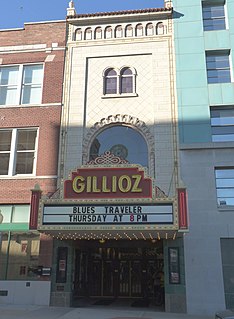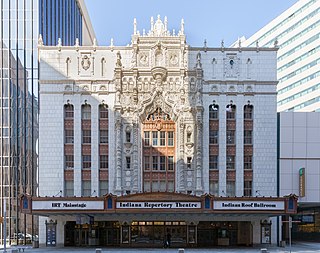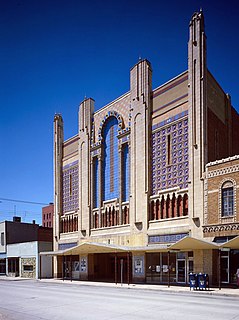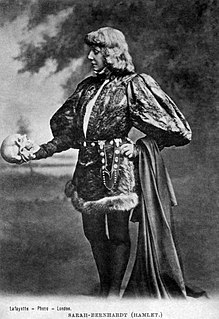Community Theatre or Community Theater may refer to:

The Michigan Theater is a movie palace in Ann Arbor, Michigan, United States. It shows independent films, stage productions and musical concerts.

The Gillioz Theatre is a historic theatre located at Springfield, Missouri, United States. It was built by M. E. Gillioz of Monett, Missouri. Mr. Gillioz was in the business of building bridges, and the theater was built with steel and concrete. Wood was only used for handrails, doors, and doorframes. The original cost of the building was $300,000. Renovation costs totaled approximately $1.9 million.
The Boston Center for the Arts (BCA) is a 501(c) nonprofit visual and performing arts complex in the South End neighborhood of Boston, Massachusetts. The BCA houses several performance and rehearsal spaces, restaurants, a gallery, the headquarters of the Boston Ballet, the Community Music Center of Boston and several other arts organizations. The BCA also serves as home to four Resident Theater Companies and a number of artists. The BCA's main building, the Cyclorama, is on the National Register of Historic Places. Boston Ballet's headquarters was designed in 1991 by architect Graham Gund.

The Iao Theater is a Spanish Mission style theater opened in 1928, in the city of Wailuku, Maui Hawaii. It was originally both a movie and vaudeville house, until it fell into disrepair in the 1980s. Facing possible demolition, in 1994, it was listed on the State of Hawaii's Register of Historic Places. It was placed on The National Register of Historic Places in 1995. It later became the home of Maui OnStage, a community-based theatrical organization.

The Palace Theatre was a historic movie palace in downtown Cincinnati, Ohio, United States. Constructed at the dawn of the Roaring Twenties, it originally housed stage acts before conversion into a movie theater. Named a historic site because of its architecture, it was demolished in the early 1980s following years of financial failures.

The Indiana Theatre is a multiple use performing arts venue located at 140 W. Washington Street in Indianapolis, Indiana. It was built as a movie palace and ballroom in 1927 and today is the home of the Indiana Repertory Theatre. It was added to the U.S. National Register of Historic Places in 1979. It is located in the Washington Street-Monument Circle Historic District.

Cumston Hall is a historic community building at 796 Main Street in downtown Monmouth, Maine. Built in 1900, it is one of the most flamboyant examples of wooden Romanesque architecture to be found in a small-town setting in the entire state. It was a gift to the town of Dr. Charles M. Cumston, and presently houses the local public library and local theatrical companies. It was listed on the National Register of Historic Places in 1973.

The Old Hose House is an historic fire house at 1249 Main Street in Reading, Massachusetts. The Colonial Revival wood frame building was constructed in 1902 for a cost of $1,180.50, plus $10 for the land on which it stands. The modestly-scaled building housed a fire truck until 1930, after which time it has served as home to community groups. The building was listed on the National Register of Historic Places in 1984.

The Ruby Theater is a small movie theater located at 135 East Woodin Avenue in Chelan, Washington. Built in 1914, it was named after Ruby Potter, the daughter of its manager, Frank Potter. The original owners were Herbert R. Kingman and Morrison M. Kingman. Original seating capacity was 225 on the main level and 125 in the balcony. The theater was equipped as a cinema and as a vaudeville house. With the exception of 1972-1974, the Ruby has been showing movies for over ninety years, and is one of the oldest movie theaters in Washington.

The Scott Joplin House State Historic Site is located at 2658 Delmar Boulevard in St. Louis, Missouri. It preserves the Scott Joplin Residence, the home of composer Scott Joplin from 1901 to 1903. The house and its surroundings are maintained by the Missouri Department of Natural Resources as a state historic site. The house was added to the National Register of Historic Places and designated a U.S. National Historic Landmark in 1976.

The Standard Theatre, now known as the Folly Theater and also known as the Century Theater and Shubert's Missouri, is a former vaudeville hall in downtown Kansas City, Missouri. Built in 1900, it was designed by Kansas City architect Louis S. Curtiss. The theater was associated with the adjoining Edward Hotel, which was also designed by Curtiss; the hotel was demolished in 1965.

The Missouri Theater and the Missouri Theater Building adjoin each other in St. Joseph, Missouri. The Missouri Theater was built as a cinema in the atmospheric style, using a combination of Art Deco and Moorish detailing. The Missouri Theater Building was built as a companion, and both were completed in July 1927.

The Guilford Center Meeting House, formerly the Guilford Center Universalist Church, is a historic building on Guilford Center Road in Guilford, Vermont. Built in 1837, it is a well-preserved example of transitional Greek Revival architecture. The building was added to the National Register of Historic Places in 1982. It is now owned by the local historical society as a community meeting and event space.

The Kahl Building is an historic building located in Downtown Davenport, Iowa, United States. It was listed on the National Register of Historic Places in 1983. The building also includes the Capitol Theatre.

The Thomaston Opera House is a historic performance venue and the town hall of Thomaston, Connecticut. Located at 153 Main Street, it was built in 1883-85, and is a good local example of Romanesque architecture. The theater in the building has served as a performance and film venue since its construction. It was listed on the National Register of Historic Places in 1972. The opera house's principal tenant is now the Landmark Community Theatre.

Esquire Theater is a historic movie theater located at Cape Girardeau, Missouri. It was built in 1946-1947, and is a two-story, brick building with a colorful Art Deco facade. The building measures approximately 100 feet by 60 feet. It features a projecting marquee with neon tube lights; a streamlined, curving entrance and ticket booth; a projecting proscenium-like arch; and embellishments including enameled and stainless steel, structural pigmented glass, marble and glass blocks.

Armour Theatre Building is a historic theatre building located at North Kansas City, Missouri. It was designed by the architectural firm Keene & Simpson and built in 1928. It is a two-story, polychromatic brick building with Spanish Eclectic style design elements. It features a Mission tile roof, arched fenestration and decorative tiles, and glazed terra cotta detailing. The building houses the theater, community rooms, and offices.

Finke Opera House, also known as the Ritz Theatre, is a historic opera house located at California, Moniteau County, Missouri. It was built in 1885, and is a two-story, eclectic Late Victorian style brick building. The building features decorative brickwork banding and segmental window arches with stone accents. It was built as a multi-use facility and now used as a community theater / meeting hall.
























